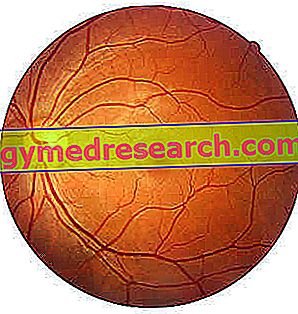Trichotillomania is an obsessive-compulsive behavior disorder characterized by an uncontrollable urge to pull and tear the hair from the scalp.

Trichotillomania, if protracted over time, causes the appearance of hairless patches in the scalp or in the areas of skin involved. The extreme need to tear one's hair manifests itself as a response to a state of emotional tension, which is not vented in an alternative way. Those suffering from trichotillomania, are seized by a growing sense of tension and excitement, followed by a sense of relief at the completion of the pathological act. The subject, after the satisfaction phase, feels a strong sense of discomfort and guilt. In fact, the patients are not able to stop this behavior, despite the repeated traction stresses causing the evident and unpleasant hair loss. For some people, trichotillomania can be mild and generally manageable. For others, the impulse to remove hair is impossible to control and can be accompanied by considerable personal and social distress.
Trichotillomania should not be confused with the habit of touching one's hair or the normal habit of playing with it. Furthermore, the disorder is not related to baldness or alopecia. It is important to stress that hair loss does not occur spontaneously, but is the consequence of a pathologically self-induced and recurrent act. Although it may not seem particularly serious, trichotillomania can have a great impact on the patient's life. Sometimes, this condition is self-limiting, but it is always advisable to promptly resort to a doctor who can recommend the most suitable therapy.
Causes, incidence and risk factors
Trichotillomania is a type of obsessive-compulsive disorder. The causes behind this behavior have not yet been clearly defined, but it is hypothesized that trichotillomania may derive from a combination of genetic, hormonal and environmental factors. Furthermore, the onset is strongly influenced by psychological reasons.
Trichotillomania occurs most commonly in children between 2-6 years of age and adolescents, especially during the period that coincides with puberty. The most affected range is between 9 and 13 years. However, the condition can also manifest itself during adulthood, both in the case in which the trichotillomania continues from adolescence, and in the eventuality in which it arises from scratch following a triggering episode of a psychological nature, for example an event traumatic, medical intervention or unresolved emotional difficulties, in the family or at work. In children and adolescents, trichotillomania can be present for limited periods of time, while if it occurs in adults it is usually a manifestation of malaise and emotional distress more disturbing. Trichotillomania affects about 4% of the population and mainly affects female subjects. Most people with trichotillomania also have other disorders, including depression, anxiety or eating disorders. Also the habit of biting nails (onicophagia) and hair (trichophagia) are obsessive-compulsive behaviors commonly associated with trichotillomania. For many patients, hair pulling is a way of dealing with negative emotions or situations of distress, such as stress, anxiety, tension, loneliness, fatigue or frustration. Often, trichotillomania is a behavior that can give relief and satisfaction. The result can be a pathological act continually repeated in order to maintain these positive feelings. In some cases, trichodynia, a disorder that manifests itself with persistent scalp pain, can be the cause of trichotillomania.
How it manifests itself
The most obvious and unpleasant symptom of trichotillomania is alopecia, or hair loss. In specific areas of the skin, patches are visible where there is no hair or hair, similar to what happens with some forms of alopecia areata. The areas of the scalp in which the tricotillomane most exerts the maniacal behavior are those frontoparietal.
Signs and symptoms of trichotillomania often include:
- Repeatedly twist hair or hair, pulling it up to tear it, resulting in considerable hair and / or hair loss;
- Irregular and uneven appearance of the hair, associated with a regrowth of short and broken hair next to longer ones;
- Sparse or missing eyelashes or eyelashes;
- Glabrous patches in the scalp or other areas of the body (trichotillomania rarely causes such extensive damage that it causes a lack of widespread growth throughout the head);
- Playing with the extirpated hair (example: curling around the fingers) or biting them and eating them;
- Rub the torn hair on the face or lips.
Most people with trichotillomania:
- Try to deny or conceal behavior;
- He feels a growing sense of tension before pulling his hair, followed by a sense of relief, pleasure or satisfaction once the tear has occurred;
- Feel embarrassed or ashamed of your hair loss.
For some people, pulling hair is intentional and focused behavior: they are fully aware of the fact that they are tearing them and can even elaborate particular rituals, choosing the right place and time to work privately. Sometimes the trichotillomane lingers to examine the extirpated hair, observing its shape, the size of the bulb, etc. or arranges them in order on a surface based on subjective criteria. Other subjects tear their hair unconsciously while engaged in other activities. The same person can also manifest both behaviors, depending on the situation and mood. For example, the patient can manifest the disorder in precise contexts , during particularly frustrating and stressful periods, or in moments of boredom or inactivity. Certain positions or habits can stress the need to pull hair, such as resting your head on your hand.
Complications
- Damage to the hair . If protracted over time, trichotillomania can cause irreversible damage, such as to make atrophic hair bulbs. The functionality of the follicle, in some cases, cannot be restored.
- Skin damage. Constantly pulling hair can cause excoriations, dermatitis or other damage to the skin, including infections, located on the scalp or the specific area affected by the disorder.
- Boluses of hair or hair. The compulsive habit of eating torn hair (trichophagia) can lead to the formation in the gastrointestinal tract of a tricobezoario (or pilobezoar, if made up of hairs), that is an indigestible mass, strongly intertwined and solid, which goes to locate in the stomach or 'small intestine. Over a period of years, bezoar can cause symptoms such as indigestion, gastric pain, dietary deficiencies, weight loss, vomiting and obstruction. The intestinal obstruction, resulting from the consumption of hair and / or hair, can extend to the duodenum or to the ileum. This last condition is called Rapunzel syndrome (the name comes from the fairy tale of Rapunzel) and in extreme cases can be lethal. The human gastrointestinal tract is unable to digest hair, so surgery may be required to remove the bolus.
- Emotional stress. Many people affected by trichotillomania may experience a feeling of shame, humiliation and embarrassment because of their condition, and suffer consequently from depression and anxiety .
- Social issues. The embarrassment caused by hair loss can cause the patient to wear false eyelashes, wigs, hats, headscarves or adopt a hairstyle to mask the hairless areas. People with trichotillomania can avoid situations of intimacy for fear that their condition will be discovered.
Diagnosis
Patients may not recognize the problem or actively try to hide it, at least until it manifests itself overtly due to the obvious abnormal loss of hair or hair in specific areas of the body. For this reason the diagnosis is not always immediate. If the patient does not allow himself to tear his hair, it is certainly correct to consider other forms of disorders with symptoms similar to those of trichotillomania. The differential diagnosis includes evaluation for alopecia areata, tinea capitis, traction alopecia, discoid lupus erythematosus, folliculitis and anagen lasso syndrome.
Your doctor will perform a thorough assessment of your skin, hair and scalp. The exam aims to define the extent and frequency of the disturbance. A tissue sample (biopsy) could be pruned to look for other causes that could justify hair loss or the urge to tear hair. The biopsy allows the detection of traumatized hair follicles with perifollicular hemorrhage, hair fragmented in the dermis and stem of the deformed hair. In the case of trichotillomania, a lot of catagen hair will generally be seen. An alternative technique to biopsy, particularly for children, is to shave a part of the affected area and observe the regrowth of normal hair. In the case of trichotillomania, the "pull test" of the hair is negative (the procedure consists in gently pulling the hair by sliding it between the fingers, to assess how many are detached from the scalp).
According to the DSM criteria (Diagnostic and Statistical Manual of Mental Disorders) the presence of trichotillomania can be suspected when:
- Hair pulling is a recurring act, with the result of considerable hair loss;
- The subject experiences a sense of growing tension immediately before tearing the hair or trying to resist the impulse;
- While performing the act, a sense of pleasure, gratification or relief arises in the patient;
- Hair loss is not attributed to another medical or dermatological condition;
- The condition causes clinically significant distress.
Treatment
Trichotillomania must always be considered for the subjective meaning attributed by the individual patient. Frequently used treatments for trichotillomania care include:
- Cognitive behavioral therapy . Psychological therapy is the most widely used, as it is aimed at identifying the causal stimulus of trichotillomania. Cognitive behavioral therapy is one of the most effective psychological techniques: it helps the patient to recognize the thoughts, feelings and triggers associated with pulling the hair. The goal of this therapy is to increase awareness of one's behavior, to replace it with alternative and positive reactions. Furthermore, cognitive-behavioral therapy teaches to control reactions to psychological impulses that force the patient to remove hair and hair.
- Drug therapy . Drug therapy is used in more severe cases to reduce the anxiety, depression and obsessive-compulsive symptoms that accompany trichotillomania. If there is a fairly close correlation between the psychological distress that stimulates trichotillomania and the pathological act itself, intervening with a pharmacological therapy the impulse to pull hair should stop. Some selective serotonin re-uptake inhibitors (SSRIs), clomipramine (tricyclic antidepressant) and naltrexone (opiate receptor antagonist) have been shown to be effective in reducing some symptoms, but not all experts agree on the use of drugs for trichotillomania treatment. These should only be used in adult patients after careful medical evaluation.
Most people who use targeted therapy can get better. In general, if the disorder occurs during early childhood (before 6 years of age) it tends to be mild and disappear spontaneously without treatment. In adults, the onset of trichotillomania may be secondary to underlying psychiatric disorders and therefore may be more difficult to treat.
If the patient has overcome the compulsive behavior with adequate therapy it is possible to resort to specific treatments to stimulate the still prolific follicles and make the fallen hair grow. Once removed from harmful behavior, hair and hair tend to grow back spontaneously. If the hair bulbs are seriously damaged, the last possible resource consists in surgical thickening with the autograft (trichological surgery). Early diagnosis is the best form of prevention, as it induces to undertake an equally early and therefore effective treatment: resorting to therapy as soon as the first symptoms appear could help reduce any discomfort for the life of the person. There is no known way to prevent trichotillomania, although the decrease in stress can definitely limit the compulsive behavior underlying the problem.



